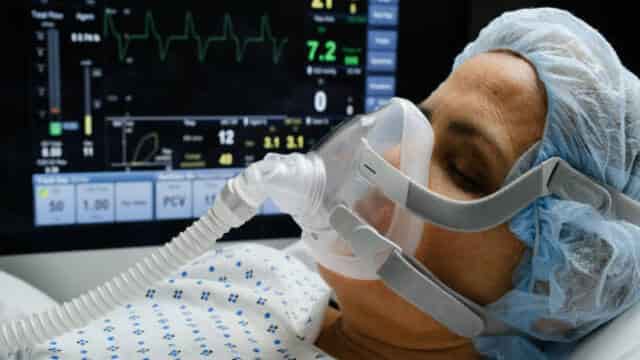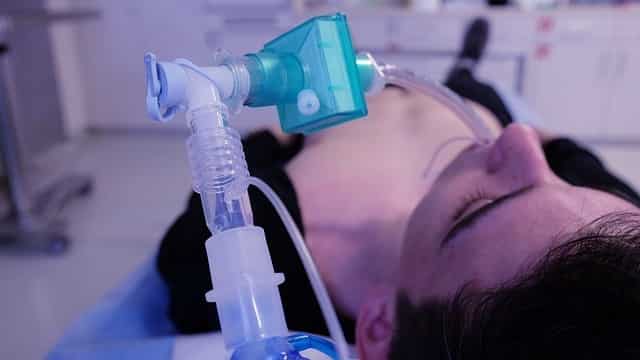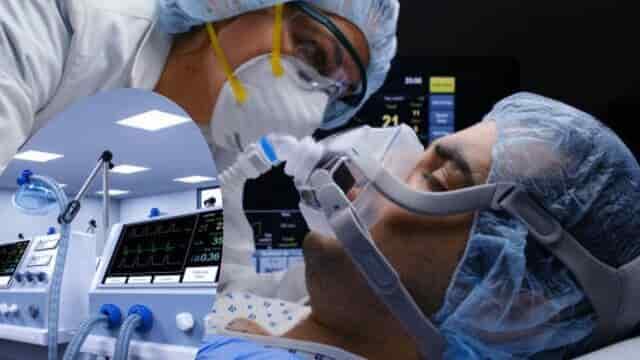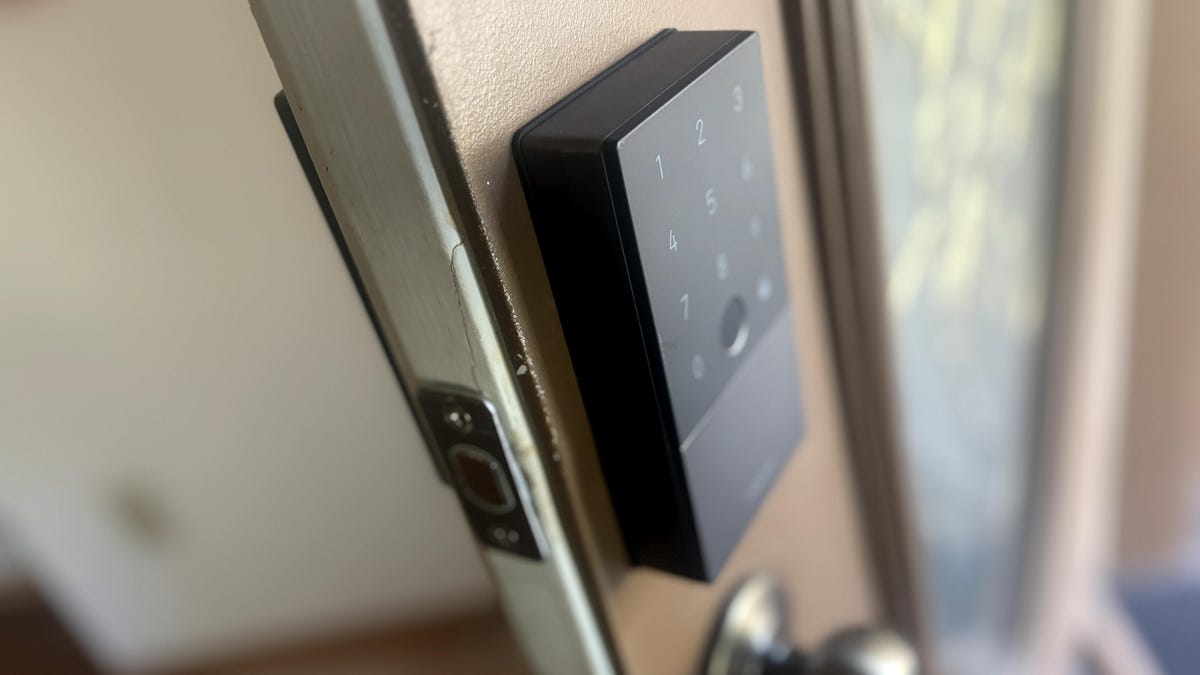During the pandemic (Covid 19) most of the peoples are aware from ventilator, and it’s importance in critical care.
It is a life support device that takes over the breathing function, when a person is not able to breathe enough naturally. It is also called a respirator or breathing machine.
There are many reasons like low oxygen levels or severe shortness of breath from an infection such as pneumonia a patient may need a respiratory support.
Used to deliver high concentrations of oxygen into the lungs. To help get rid of carbon dioxide.
To decrease the amount of energy a patient uses on breathing so their body can concentrate on fighting
infection or recovering.
To provide help in breath a person who is not breathing because of injury to the nervous system, like the brain or spinal cord, or who has very weak muscles.
A patient who is unconscious because of a severe infection, build up of toxins, or drug overdose. Most patients on a ventilator are monitored in an ICU which is part of critical care in any hospital.
Anyone on a ventilator in an ICU setting hooked up to a monitor that measures heart rate, respiratory rate, blood pressure, and oxygen saturation.
Other tests that may be done include chest x-rays and blood drawn to measure oxygen and carbon dioxide (“blood gases”).
Members of the critical care team including doctors, nurses, respiratory therapists use this information to assess the patient’s status and make adjustments if necessary.
Working of ventilator
When a person needs life support, a well trained medical staff insert an endotracheal tube (ET tube) through the patient’s nose or mouth and into their windpipe called trachea.
This tube is then connected to the device. The endotracheal tube and it does a variety of jobs.
Like pushes a mixture of air and oxygen into the patient’s lungs to get oxygen into the body.
It can also hold a constant amount of low pressure, called positive end-expiratory pressure (PEEP), in order to keep the air sacs in the lung from collapsing.
The endotracheal tube allows doctors and nurses to remove mucous from the windpipe by suction.
If a person has a blockage in the trachea, such as from a tumor, or needs the ventilator for a long period of time, then they may need a tracheostomy procedure.
During a tracheostomy, a surgeon makes a hole in the patient’s neck and trachea, then inserts a breathing tube called a tracheostomy tube into the hole. The tracheostomy tube is then connected to the machine.
A tracheostomy tube can stay in as long as needed, but does not have to be permanent and can be removed if a patient no longer needs it.
It is possible for a person to talk and eat with a tracheostomy tube.
How long is a ventilator used?
It can be life saving, but its use has risks. It doesn’t fix the problem that led to the person needing the life support in the first place.
It just helps support a person until other treatments become effective, or the person gets better on their own.
The medical staff always tries to help a person get off the machine at the earliest possible time. “Weaning” refers to the process of getting the patient off the device.
Some patients may be for only a few hours or days, while others may require for longer. How long a patient needs depends on many factors.
These can include overall strength, how well their lungs were before going on the ventilator, and how many other organs are affected like the brain, heart and kidneys.
Some people never improve enough to be taken off the life support.
Patient experience while on a ventilator
The machine itself does not cause pain, but the tube may cause discomfort because it can cause coughing or gagging.

A person cannot talk when an ET tube passes between the vocal cords into the windpipe. He or she also cannot eat by mouth when this tube is in place.
A person may feel uncomfortable as air is pushed into the lungs. Sometimes a person will try to breathe out when the machine is trying to push air in.
This is working (or fighting) against the life support and makes it harder for the machine to help.
People on life support may be given medicines (sedatives or pain controllers) to make them feel more comfortable.
These medicines may also make them sleepy. Sometimes, medications that temporarily prevent muscle movement (neuromuscular blocking agents) are used to allow the ventilator to do all the work for the patient.
These medications are typically used when a person has a very severe lung injury. They stopped as soon as possible and always before life support is removed.
When need to use ventilator
Device comes under a “life-sustaining treatment”. It is a treatment that can prolong life. It may be needed for only a short time.
However, some people cannot be weaned off the life support and do not want to stay on the machine.
Other people who know they have a very severe lung or health problem may not even want to use a life support at all because the machine cannot fix their underlying disease.
Some people have very specific thoughts about if and when they should be placed on a life support.
Although the healthcare team helps people and their families make tough decisions about the end of life, it is the person him or herself who has the final say.
If a person cannot talk or communicate decisions, the medical staff will talk with his or her legally
authorized representative (usually a parent, wife or husband, adult child, or next of kin).
It is important that you talk with your family members and medical staff about using life support and what you would like to happen in different situations.
The more clearly you explain your values and choices to friends, loved ones and the medical staff.
The easier it makes it for them to follow your wishes if and when you are unable to make decisions yourself.
Advance directives are ways to also put your wishes in writing to share with others. In the hospital, nurses, doctors and social workers can provide information about an advance directive form.
Risks of mechanical ventilation
Although it is a life saving equipment but there are some issues that can develop from using the machine includes.

Infections
Patients who are on the device are more likely to get pneumonia, which can be a serious problem.
A patient may need to remain on the machine for longer while the pneumonia is treated with antibiotics.
Collapsed lung (pneumothorax)
Sometimes, a part of the lung can become weak and develop a hole, letting air leak out and causing a collapsed lung.
If the lung collapse is severe enough, it can cause death. In order to re-expand the lung, a tube needs to be placed into the chest (chest tube) to drain the air that is leaking out.
Once the lung has healed, then the tube can be removed.
Lung damage
The pressure of putting air into the lungs with a ventilator can damage the lungs.
Doctors try to keep this risk at a minimum by using the lowest amount of pressure that is needed. Very high levels of oxygen may be harmful to the lungs as well.
Doctors only give as much oxygen as it takes to make sure the body is getting enough to supply vital organs. Sometimes it is hard to reduce this risk when the lungs are damaged.
However, this damage may heal if a person is able to recover from the serious illness.
Side effects of medications
Sedatives and pain medications can cause a person to seem confused or delirious, and these
side effects may continue to affect a person even after the medications are stopped.
The healthcare team tries to adjust the right amount of medication for a person. Different people
will react to each medicine differently.
If a medication to prevent muscle movement is needed, the muscles may be weak for a period of time after the medication is stopped.
This may get better over time. Unfortunately, in some cases, the weakness remains for weeks to months.
Inability to discontinue life support
Sometimes, the illness which led a person to need a ventilator does not improve despite treatment.
When this happens, the medical staff will discuss your treatment preferences regarding continuing support.
More often the medical staff have these discussions with family members or the patient, if the person is able to participate.
In situations where a person is not recovering or is getting worse, a decision may be made to discontinue support, and allow death to occur.
Also wish to know about oxygen level monitoring devices, click on Pulse Oximeter.
Original Authors: Martin Tobin, MD, Constantine Manthous, MD.
Additional Resources:
American Thoracic Society
National Heart Lung & Blood Institute
For DIY projects follow and subscribe our Computernxtechnology youtube channel.





















Discussion about this post